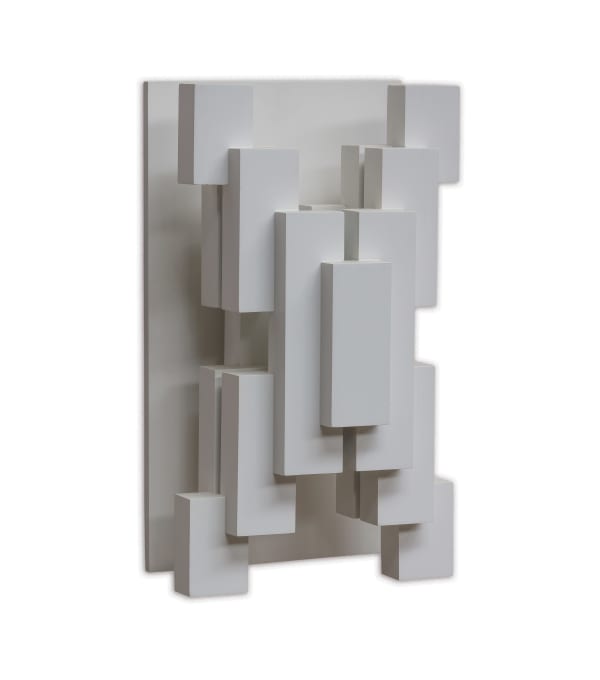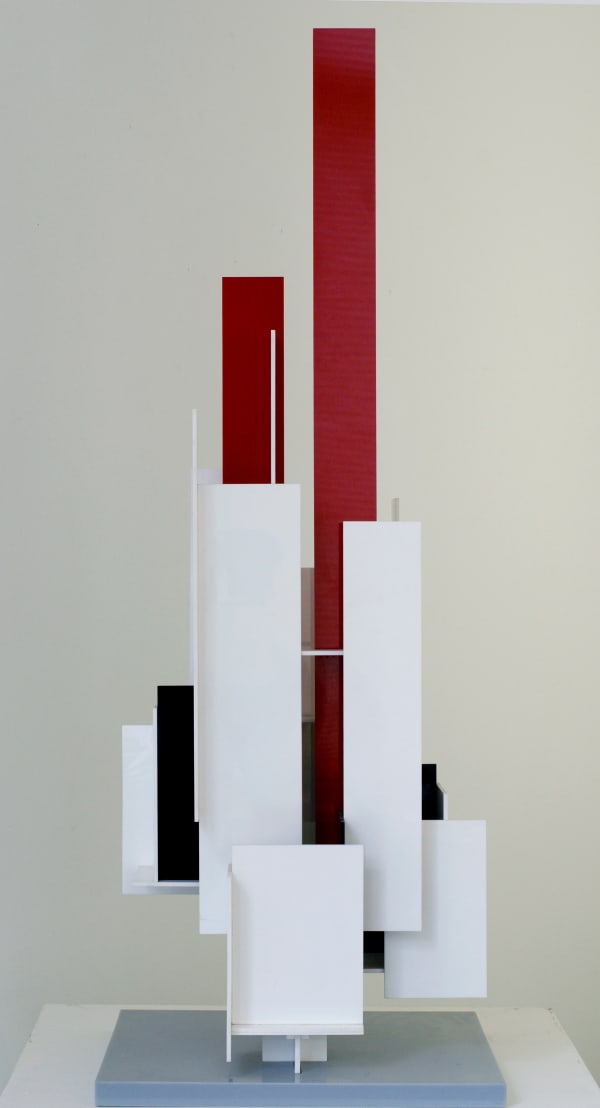Joost Baljeu Dutch, 1925-1991
Joost Baljeu (1925-1991) was a visual artist who has been inspired by the avant-garde movements of the first half of the twentieth century, such as 'De Stijl'. Together with architect Dick van Woerkom he made a series of models in which they tried to apply the ideas of Theo van Doesburg on the integration of architecture and fine arts.
Baljeu followed training as an art teacher during World War II at the Institute of Applied Art in Amsterdam. After completing his military service he worked in a bookstore, and he painted in his spare time. Under the influence of the many avant-garde movements, Baljeu started to follow the currents into a more abstract style. In 1954 he gave up his job and full-time artist. In the same period he searched, in imitation of De Stijl, for opportunities to integrate architecture and visual arts.
Even after the collaboration with Van Woerkom, Baljeu continued to be interested in architecture and urban design. From 1973 until 1974 he worked on the "Housing System Utopian Project (HSUP)" in which he searched for a solution for the monotony of the functionalist house.
(via the Dutch Institute of Architecture)
-

PAN Amsterdam 2024
Stand 36 23 Nov - 1 Dec 2024Akkerman's oeuvre developed cautiously and resolutely in equal measure. Even in his teens, he drew and painted farms, watermills and landscapes. In the early 1960s, his figuration was characterized by...Read more -

TEFAF Maastricht 2018
Stand 448 10 - 18 Mar 2018The BorzoGallery stand at TEFAF 2018 was designed by HOH Architecten from Amsterdam. This young architect team has created an exciting design in which the many sculptures that BorzoGallery shows...Read more -

Frieze Masters 2017
5 - 8 Oct 2017The Mayor Gallery and BorzoGallery are proud to present the upcoming show: De Stijl reSTRUCTUREd At Frieze Masters, Regent's Park, London Opening (by invitation only) - Wednesday 4 October 5-8...Read more -

EXPO Chicago 2016
21 - 25 Sep 2016BorzoGallery & The Mayor Gallery are pleased to participate in EXPO Chicago 2016 with works by Anne Appleby, Bram Bogart, Ger van Elk, Jan Schoonhoven and herman de vries.Read more -

after zero
12 Nov - 3 Dec 2011In the Dutch art history of the second half of the 20th century, some movements can actually be measured by international standards. They are characterized by innovation, cooperation and group...Read more












